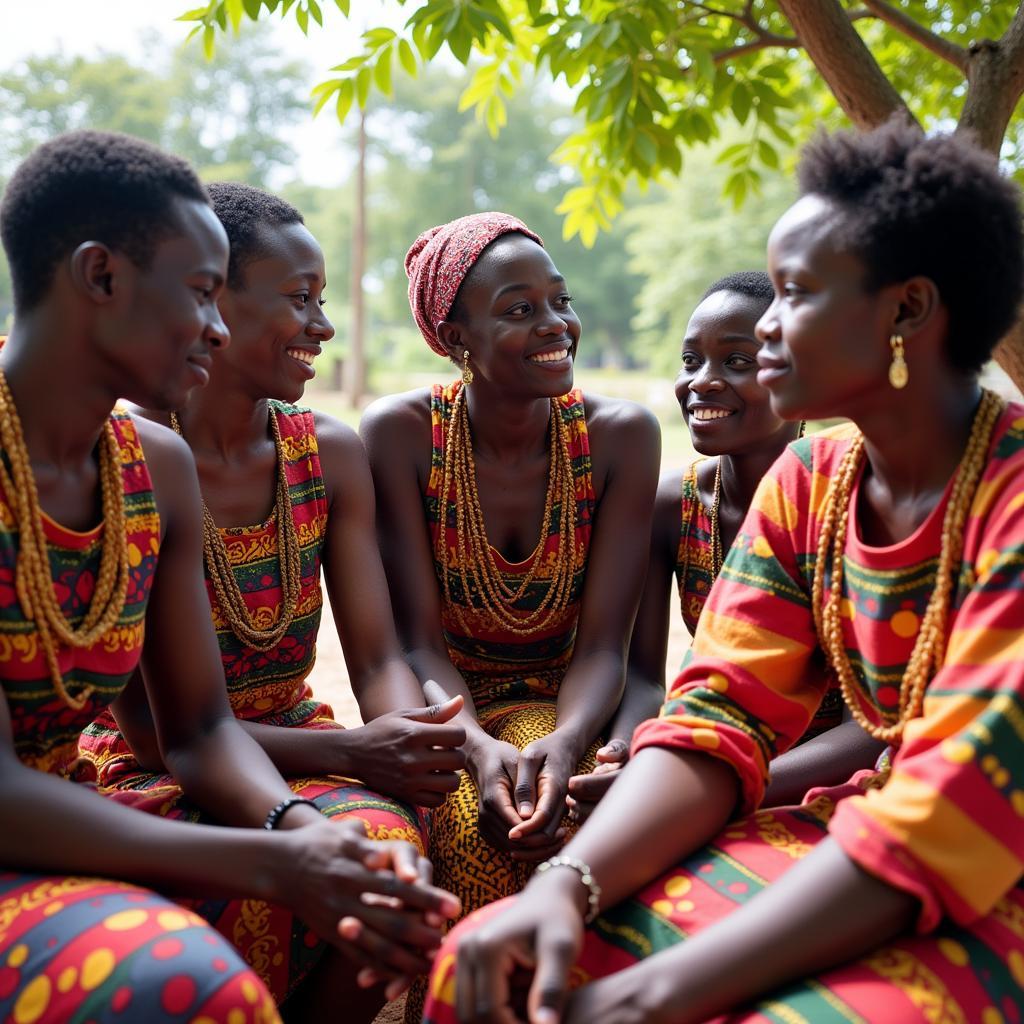Unveiling the Majesty: Cloth Weaving in African Kingdoms
From the sands of the Sahara to the southernmost tip of Africa, the continent pulsates with a rich history of powerful kingdoms and empires. While their legacies are often told through tales of conquest and trade, there exists a quieter, more intricate narrative woven into the very fabric of their existence – cloth weaving. In African kingdoms, cloth weaving transcended mere functionality; it evolved into a sophisticated art form, a powerful symbol of status, and a tangible embodiment of cultural identity.
More Than Just Threads: The Significance of Woven Cloth
In many African kingdoms, woven cloth became a powerful form of currency, as valuable as gold or salt. It served as a medium of exchange in trade, a symbol of wealth and influence, and even played a crucial role in political alliances and social hierarchies. The quality of the cloth, the complexity of its patterns, and the materials used all spoke volumes about the wearer’s social standing and economic prowess.
For example, among the Ashanti people of present-day Ghana, Kente cloth, renowned for its vibrant colors and geometric patterns, was traditionally worn by royalty and reserved for special occasions. Each design element in Kente cloth carries symbolic meaning, reflecting proverbs, historical events, or specific social values. This intricate language of patterns transformed cloth into a living testament to the Ashanti’s cultural heritage.
Similarly, the Yoruba people of Nigeria are celebrated for their exquisite Aso Oke fabric, hand-woven on narrow strip looms and often adorned with intricate embroidery. Used for ceremonial garments, Aso Oke represents a tangible link to Yoruba ancestry and is highly prized for its beauty and cultural significance.
Weaving Techniques and Artistic Mastery
The art of cloth weaving in African kingdoms was often passed down through generations, with specific techniques and designs becoming closely guarded secrets within families or communities. This intergenerational transmission of knowledge ensured the preservation of cultural heritage while allowing for innovation and evolution within the craft.
From the intricate strip weaving of the Yoruba Aso Oke to the resist-dyeing techniques used to create the vibrant patterns of the Kuba textiles of the Democratic Republic of Congo, African weavers demonstrated remarkable ingenuity and artistry. They utilized locally sourced materials like cotton, raffia, silk, and even bark fibers, transforming them into exquisite textiles that reflected the diverse environments and cultural aesthetics of their respective regions.
A Legacy Woven in Time
The tradition of cloth weaving in African kingdoms continues to thrive today, albeit with adaptations to the modern world. While some aspects of production have been modernized, many weavers remain dedicated to preserving the traditional techniques passed down through their ancestry.
African woven textiles have transcended their geographical origins to captivate the global stage. From fashion runways to museum collections, the vibrant colors, intricate patterns, and cultural significance embedded within each piece have garnered international acclaim. This renewed appreciation highlights the enduring legacy of African artistry and the power of cloth weaving as a form of cultural expression and historical preservation.
FAQs About Cloth Weaving in African Kingdoms
1. What are some of the most famous types of woven cloth from African kingdoms?
Some of the most renowned examples include Kente cloth from the Ashanti people of Ghana, Aso Oke from the Yoruba people of Nigeria, Kuba textiles from the Democratic Republic of Congo, and the intricate mudcloth fabrics of Mali.
2. Are these traditional weaving techniques still practiced today?
Yes, many communities across Africa continue to practice traditional cloth weaving, ensuring the preservation of their cultural heritage for future generations.
3. What is the cultural significance of woven cloth in African societies?
Woven cloth often holds deep cultural and spiritual significance, representing social status, ancestral lineage, and cultural identity. It is often used in ceremonies, rituals, and as a form of symbolic communication.
Exploring Further:
To delve deeper into the world of African textiles and discover more about the specific weaving traditions of different regions, explore these fascinating links:
Need Help?
For any inquiries or assistance, please don’t hesitate to contact us:
Phone: +255768904061
Email: kaka.mag@gmail.com
Address: Mbarali DC Mawindi, Kangaga, Tanzania.
Our dedicated customer service team is available 24/7 to assist you.


